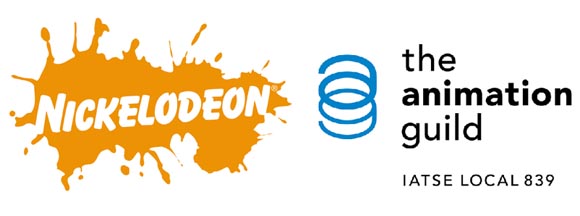A judge rule that animation artists can continue a case against studios which allegedly suppressed wages for decades through fraud.
Add a CommentViewing: Blog Posts Tagged with: Artist Rights, Most Recent at Top [Help]
Results 26 - 50 of 52
Blog: Cartoon Brew (Login to Add to MyJacketFlap)
JacketFlap tags: Law, Disney, Pixar, George Lucas, Steve Jobs, Lucasfilm, Dick Cook, DreamWorks Animation, Jeffrey Katzenberg, Ed Catmull, Artist Rights, Lucy H. Koh, Lori McAdams, David Wentworth, Jr. Georgia Cano, Robert A. Knitsch, Sharon Coker, Add a tag
Blog: Cartoon Brew (Login to Add to MyJacketFlap)
JacketFlap tags: Law, copyright, Pixels, Sony, Vimeo, DMCA, Artist Rights, Entura International, Add a tag
Sony succeeded in removing multiple films from Vimeo with the word "pixels" in its title.
Add a CommentBlog: Cartoon Brew (Login to Add to MyJacketFlap)
JacketFlap tags: Alex Bulkley, Eric Blyler, Netflix, Artist Rights, BoJack Horseman, ShadowMachine, Add a tag
A letter from the show's producer asked artists to pull down their artwork from the Internet.
Add a CommentBlog: Cartoon Brew (Login to Add to MyJacketFlap)
JacketFlap tags: Business, Artist Rights, Animation Guild, Local 839 IATSE, Steve Hulett, Steve Kaplan, Alliance of Motion Picture and Television Producers, Jack Thomas, Michael F. Miller, Add a tag
Blog: Cartoon Brew (Login to Add to MyJacketFlap)
JacketFlap tags: Disney, Pixar, dreamworks, Lucasfilm, Sony Pictures Animation, DreamWorks Animation, Ed Catmull, Artist Rights, Blue Sky Studios, Wage Theft, Add a tag
Blog: Cartoon Brew (Login to Add to MyJacketFlap)
JacketFlap tags: Anime, Artist Rights, Henry Thurlow, Nakamura-Productions, Pierrot Studios, Add a tag
"Everything about my life is utterly horrible," says an American animator working in Japan, and that's how he likes it.
Add a CommentBlog: Cartoon Brew (Login to Add to MyJacketFlap)
JacketFlap tags: Pixar, Lucasfilm, Sony Pictures Animation, DreamWorks Animation, Ed Catmull, Artist Rights, Blue Sky Studios, Walt Disney Animation Studios, Lucy H. Koh, Wage Theft, Add a tag
The major studios filed a motion last Friday in federal court asking a judge to dismiss the antitrust wage-fixing lawsuit that had been filed by animation industry employees.
Add a CommentBlog: Cartoon Brew (Login to Add to MyJacketFlap)
JacketFlap tags: Pixar, Ed Catmull, Artist Rights, Wage Theft, Disney, Add a tag
Ed Catmull allegedly told Disney artists they were free to find higher-paying work at other studios while he knew they couldn't.
Add a CommentBlog: Cartoon Brew (Login to Add to MyJacketFlap)
JacketFlap tags: Disney, Sony Pictures Animation, Uli Meyer, Salaries, Sony Pictures Imageworks, Artist Rights, Who Framed Roger Rabbit, Bob Osher, Add a tag
Animation veteran Uli Meyer recounts what happened when he shared his wage with co-workers on "Who Framed Roger Rabbit."
Add a CommentBlog: Cartoon Brew (Login to Add to MyJacketFlap)
JacketFlap tags: Bob Osher, Sony Pictures Animation, Salaries, Sony Pictures Imageworks, Artist Rights, Add a tag
Sony tries to trick animation students with "advice" on how to be a successful employee at their studio.
Add a CommentBlog: Cartoon Brew (Login to Add to MyJacketFlap)
JacketFlap tags: Pixar, Lucasfilm, Sony Pictures Animation, DreamWorks Animation, Jeffrey Katzenberg, Ed Catmull, Sony Pictures Imageworks, Artist Rights, ImageMovers, Blue Sky Studios, Cohen Milstein Sellers & Toll, Robert Nitsch, Lucy H. Koh, Wage Theft, Hagens Berman Sobol Shapiro, Kathy Mandato, Lori McAdams, Susman Godfrey, Add a tag
The wage-theft scheme operated by major American animation studios continues to grow with no end in sight.
Add a CommentBlog: Cartoon Brew (Login to Add to MyJacketFlap)
JacketFlap tags: Business, Pixar, Ed Catmull, Artist Rights, High-Tech Employee Antitrust Litigation, Lucy H. Koh, Wage Theft, Add a tag
The wage-theft scheme run by big animation studios is finally receiving some mainstream media attention after a significant piece was published today by Bloomberg News.
Add a CommentBlog: Cartoon Brew (Login to Add to MyJacketFlap)
JacketFlap tags: Adult Swim, Dan Harmon, Artist Rights, Rick and Morty, Justin Roiland, Rick and Morty LLC, Add a tag
The overworked and underpaid artists on Adult Swim’s "Rick and Morty" ratified a new labor agreement last week, and 'Rick and Morty''s co-creator doesn't like how it happened.
Add a CommentBlog: Cartoon Brew (Login to Add to MyJacketFlap)
JacketFlap tags: Business, Adult Swim, Artist Rights, Rick and Morty, Steve Hulett, Bardel, Rick and Morty LLC, Starburns Industries, Steve Kaplan, Add a tag
The crew of the Adult Swim series "Rick & Morty" ratified a new labor agreement last Monday with the Animation Guild.
Add a CommentBlog: Cartoon Brew (Login to Add to MyJacketFlap)
JacketFlap tags: Disney, Pixar, Lucasfilm, Sony Pictures Animation, DreamWorks Animation, Ed Catmull, Sony Pictures Imageworks, Artist Rights, ImageMovers, Cohen Milstein Sellers & Toll, Digital Domain 3.0, Robert Nitsch, Add a tag
Shocking details of wage-theft conspiracy emerge in a class action lawsuit filed against DreamWorks, Disney, Pixar, Lucasfilm, Digital Domain 3.0, Sony Pictures Imageworks and others.
Add a CommentBlog: Cartoon Brew (Login to Add to MyJacketFlap)
JacketFlap tags: Business, nickelodeon, Artist Rights, Animation Guild, Local 839 IATSE, Add a tag

Late-breaking labor news out of Los Angeles:
Add a CommentNICK CG ARTISTS OVERWHELMINGLY RATIFY ANIMATION GUILD CONTRACT
Burbank, CA, July 12 — Newly organized CG artists have ratified a contract negotiated between the Animation Guild, Local 839 IATSE and Nickelodeon Animation Studios. Ratification was overwhelming, with 90.1% of the bargaining unit’s 70 employees voting “Yes.”The Guild has had a contract with Nickelodeon covering traditional animation artists since 2004. Talks extending union contract protection to Nick’s CG artists extended from March to July of this year, between management and a committee of seventeen employees along with Guild representatives. The primary issue was bridging from Nickelodeon’s corporate insurance to the Motion Picture Industry Health Plan, to insure uninterrupted health coverage for covered employees.
Steve Hulett, the Animation Guild’s Business Representative Steve Hulett issued this statement:
“Five years ago, the Animation Guild went to work organizing Nick’s CG department. We had a number of setbacks, but last year, thanks to Guild organizer Steve Kaplan, communication with employees accelerated and support for the Guild increased dramatically. Early in February, Nickelodeon agreed to a neutral card count and negotiations for a contract started soon thereafter.
“Talks went on for months. TAG had a large negotiating committee of unit employees, most in their early to mid-twenties, and they were focused and tenacious through several long days of work. I doubt we could have reached agreement without them.
“Nick negotiators Bill Cole and Kevin Ellman were tough but flexible, and had a lot to do with the parties reaching agreement.”
Final negotiations over the Memorandum of Agreement wrapped on July 10, with ratification by unit employees taking place at the studio’s Burbank facility on Friday afternoon.
Blog: Cartoon Brew (Login to Add to MyJacketFlap)
JacketFlap tags: Jeffrey A. Okun, Visual Effects Society, Ideas/Commentary, Artist Rights, VFX, Add a tag

A commentary worth reading by Jeffrey A. Okun, Chair of the Visual Effects Society:
Add a Comment“We are at a tipping point in our industry – no matter where you live or work. It has become painfully obvious that while profits abound for producers and distributors, our budgets are being squeezed to the point of jeopardizing our jobs and the quest for a reasonable life style for VFX artists.”
Blog: Cartoon Brew (Login to Add to MyJacketFlap)
JacketFlap tags: Awards, Oscars, Ideas/Commentary, Academy Awards, Rhythm & Hues, Artist Rights, VFX, Bill Westenhofer, Add a tag
Last night during the Oscars, the Academy organizers interrupted Life of Pi winner Bill Westenhofer’s speech just as he was about to address the crisis in the visusal effects community. The timing of the cut-off may not have been coincidental, as Variety’s David S. Cohen pointed out on Twitter:

Hollywood’s desire to silence the animation/vfx community is made more poignant by the VFX industry demonstrations that happened earlier on Sunday in Hollywood. Westenhofer supervised the visual effects of Life of Pi at Rhythm & Hues, which has already declared bankruptcy and is among the studios hit hardest by the recent industry turmoil.
Westenhofer spoke backstage at the ceremony with animation journalist Bill Desowitz, where he explained the message he wanted to deliver to Hollywood:
Add a Comment“At a time when visual effects movies are dominating the box office, [the] visual effects companies are struggling. And I wanted to point out that we aren’t technicians. Visual effects is not just a commodity that’s being done by people pushing buttons. We’re artists, and if we don’t find a way to fix the business model, we start to loses the artistry. If anything, Life of Pi shows that we’re artists and not just technicians.”
Blog: Cartoon Brew (Login to Add to MyJacketFlap)
JacketFlap tags: Events, Artist Rights, VFX, Add a tag

What better time to protest Hollywood’s woeful treatment of animation and visual effects artists than on the film industry’s biggest day—Oscar Sunday. Tomorrow afternoon, between 1pm and 4:30pm, there will be a demonstration at Hollywood Blvd and Vine Street demanding more equitable treatment of animation/VFX artists. The event organizers have also rented a plane that will circle the Oscars between 3:30 and 4:30pm carrying a banner urging a VFX union. Over two hundred people have already confirmed their attendance on the event’s Facebook page.
The instigating event of this renewed interest in artists’ rights has been Rhythm & Hues’ bankruptcy, which makes little sense considering that the work R&H produces is among the best in the industry and responsible for a significant portion of Hollywood’s profits:
Life of Pi (Fox) and Snow White and the Huntsman (Universal) together grossed almost a billion dollars worldwide. Rhythm & Hues Studios, the company that brought Richard Parker to life and created the bulk of the visual effects for these two Oscar nominated films, has just declared bankruptcy. Many of the artists who worked nights and weekends to create those effects are out of work and unpaid for weeks of work (including nights and weekends) on new tent-pole films for the same studios, Fox and Universal. It’s time for change!
A round-up of protest coverage can be found on VFX Soldier.
Add a CommentBlog: Cartoon Brew (Login to Add to MyJacketFlap)
JacketFlap tags: Ideas/Commentary, India, Artist Rights, VFX, Add a tag

Within the last 6 months, two of the biggest U.S. visual effects houses—Digital Domain and Rhythm & Hues—have declared bankruptcy. Among the culprits responsible for their downfall is outsourcing and offshoring of VFX work to countries like India, China and Malaysia. This goes hand in hand with other reasons like foreign government tax subsidies and credits, corporate mismanagement, and Hollywood studio economics.
But what exactly does it mean when work is sent to one of those other countries? Work isn’t sent overseas simply because it’s cheaper. The cold, hard reality is that work goes overseas because developing countries have lax labor laws that offer minimum worker rights and maximum opportunity for worker exploitation. It amounts to sweatshop labor, and in some cases, indentured servitude.
We hear a lot about the perspective of Western artists affected by the outsourcing and offshoring, but nothing from the overseas artists who are the supposed beneficiaries of the work. It turns out, they’re not exactly enjoying it either.
This commentary piece was submitted by Bhaumik Mehta, an artist who spent 7 years working in the rendering and lighting departments of many top Indian animation and effects houses. He has now left the industry to work as a freelance 3D artist for interior designers and architects, a field that he says is much less exploitative. Per Mehta’s request, I have removed the names of the studios he listed in his original piece to protect colleagues who may still be working at those places.
Commentary by Bhaumik Mehta
I read your story of recent layoffs happening at studios like DreamWorks and Rhythm & Hues. I wish to express my deep sorrow and concern for all those artists who have had to put aside their families, friends and health to finish the tasks that were assigned to them by the studios.
Many bad things happen at studios in India, too. At one studio, artists are asked to work without salary for at least four months, at which point the studio can ask them to leave if they didn’t find their performance “good” enough. At another studio, they reduced their staff in the 3D animation department from 150 people to a mere 5 people. One studio takes Rs 30,000 (approximately $550) as a deposit from artists and only returns to the artist (without interest) once they complete two years employment at the studio. [Note: An average MONTHLY salary might be Rs 7,500 ($138 month) so the deposit is equivalent to nearly 4 months salary.]
Every studio has adopted a hire-and-fire policy in which artists are asked to sign a contract of six months after which the studio has a right to either keep the artist or remove them according to the project’s requirement. One studio has laid off their most senior artists and shifted their base from Mumbai to Banglore; another studio will either delay an artist’s salary by two months or won’t pay at all; and yet another studio requires their artists to come to work on Sundays as well as on public holidays. All the while, animation institutes are taking fees like Rs 450,000 (approx. $8,300) but providing education and equipment that isn’t even worth Rs 4,500.
It would be nice to raise this issue and let everyone know the condition that Indian artists have to endure. They are sacrificing their lives for their passion, but they are exploited by people who have no interest in art and whose only motivation is earning as much as possible by spending as little as they can.
I left the industry two years ago. I am glad to have done so and have started working as a freelance 3D artist for interior designers and architects. I am not earning as much as I used to when I was in the studios, but I have no fear of someone asking me to leave their office once their project is completed. I choose to live with dignity and honor as well as giving time to my family, friends and health.
I hope that by making others aware of these issue, I can save my artist friends from further exploitation.
(Photo via Shutterstock)
Add a CommentBlog: Cartoon Brew (Login to Add to MyJacketFlap)
JacketFlap tags: Business, Ideas/Commentary, Stephen Silver, Artist Rights, Add a tag
Character designer Stephen Silver is mad as hell, and he’s not going to take it anymore. Silver, who is the designer of shows like Kim Possible and Danny Phantom, posted an impassioned YouTube video a few days ago urging young artists not to give their work away for free.
Silver’s message is simple but priceless: if you don’t respect your own creative skills, others won’t either. This has always been a difficult idea for creative people to grasp—myself included—because we enjoy what we do for a living. Most young artists don’t enter the animation field because they want to become rich; they do it because they love the art form. But not everyone shares that idealism. Businesspeople and corporations are in it purely for the money, and they will gladly not pay you what you’re worth if it enhances their bottom line.
Almost every creative person eventually comes around to the concept that Silver is advocating in his video. The sooner you do it in your career, the better off you will be.
Add a CommentBlog: Cartoon Brew (Login to Add to MyJacketFlap)
JacketFlap tags: Business, Student, Internships, Interns, Artist Rights, Add a tag

Internships are addressed with increasing frequency on Cartoon Brew. While there is value to the concept of internships, too many studios use internships as a means to free labor for their animated projects. The practice is both unethical and illegal.
Time published a piece earlier this month suggesting that the era of unpaid internships may be coming to an end. It’s a good introduction to the issues surrounding interning and a must-read for any student.
The growing backlash to unpaid internships is not limited to just the animation industry. Companies who are accused of wrongdoing in the Time article include movie studios (Fox Searchlight), TV shows (PBS’s The Charlie Rose Show), and magazines (Harper’s Bazaar). More and more workers who have been victimized are filing lawsuits against their employers, a trend that could eventually pressure the US government to more strictly enforce labor laws regarding interns.
If you work in the animation industry and feel you have been subjected to an unfair labor situation, please contact me (names and contact info will be kept confidential). I can’t follow up on every request, but Cartoon Brew will continue to bring light to labor issues as much as possible.
(Photo of girl via Shutterstock)
Cartoon Brew |
Permalink |
No comment |
Post tags: Artist Rights, Interns, Internships
Blog: Cartoon Brew (Login to Add to MyJacketFlap)
JacketFlap tags: Artist Rights, Ken Harris, Overtime, Business, Ideas/Commentary, Add a tag
Animator Ken Harris becomes a meme. Via Reddit. (Ironically, Harris was one of the fastest animators at Warner Bros. and would often leave work early to play tennis. Does anybody have that luxury nowadays?)

Cartoon Brew |
Permalink |
No comment |
Post tags: Artist Rights, Ken Harris, Overtime
Blog: Cartoon Brew (Login to Add to MyJacketFlap)
JacketFlap tags: Business, CGI, The Animation Guild, Artist Rights, VFX, Add a tag

There’s a price to pay for working in visual effects, and we’re not talking about the money that students need to pay John Textor to work at Digital Domain. Many artists are faced with paying the ultimate price—a matter of life and death.
The LA Times published an important article yesterday by Richard Verrier about the health problems faced by visual effects artists and how they’re fighting back. The stories aren’t pretty:
After midnight, when the coffee and Red Bull had worn off, Sari Gennis and her co-workers would take a brisk stroll to make it through their graveyard shift. For four months straight, often seven days a week, a team of visual effects artists worked 12-hour shifts to complete the 3-D conversion of movie blockbuster Titanic. Gennis said the long hours aggravated a severe arthritis condition. She’d already had both knees replaced, and needed a third surgery, but couldn’t afford to take time off for the operation.
or:
The matte painter, who asked not to be identified for fear of damaging his career, said he nearly died when he fell asleep at the wheel after working 75 consecutive days, up to 17 hours a day, doing visual effects work on National Treasure: Book of Secrets. The money was good — $1,000 a day — but the long hours were taking a toll. Three months after his car accident, he began experiencing chest pains and was rushed to the hospital. He said emergency room nurses initially didn’t believe he was having a heart attack because he was only 37. As a freelancer, he didn’t qualify for the company insurance plan to cover his $100,000 in medical bills. His employer, the now-defunct Asylum Visual Effects, refused to hire him back.
Meanwhile, on Friday afternoon, union representatives hosted an information session for Sony Pictures Imageworks artists who are pushing to unionize the studio, a story that we covered last week on Cartoon Brew. The Animation Guild reported that the meeting was a success with over 75 Imageworks employees attending.
So will this turn out to be the VFX Spring as some are suggesting? There’s a lot of positive sentiment right now, but no one is under the illusion that working conditions will improve overnight. Animation Guild rep Steve Hulett noted on his blog that the Imageworks meeting was “only the first few steps of a long hike, but we’re going to do whatever it takes to reach out and get visual effects artists and technical directors under the big union tent.”
Cartoon Brew |
Permalink |
No comment |
Post tags: Artist Rights, The Animation Guild, VFX
Blog: Cartoon Brew (Login to Add to MyJacketFlap)
JacketFlap tags: Business, Digital Domain, Artist Rights, VFX, John Textor, Add a tag

This past Monday, John Textor sent a letter to Digital Domain employees, saying that he chose his words poorly, but didn’t make any indication that he was backing away from his plan to charge students to intern at his studio.
Textor’s rationale for making students pay to work at Digital Domain is that he felt strongly about keeping jobs in North America. That’s why yesterday he announced a co-production deal with Chinese company Beijing Galloping Horse Film Co., Ltd. which will serve as co-producer and distributor of Digital Domain’s first feature The Legend of Tembo.
It’s easy to understand why Textor is so enthused about China. The Chinese government is giving him free land and Chinese investors are handing over $50 million for Digital Domain to build a motion capture facility. With a deal like that, students will have to pay Textor a lot more money to work for free if they want those jobs to stay in North America.
Keep reading for the full text of Textor’s email sent to Digital Domain employees.
From: John Textor
Date: Mon, 9 Apr 2012 16:22:37 -0700
To: John Textor
Subject: My Comments On Our Education Program
Hi everyone,
I want to take a minute to speak to the discussion happening around the industry that started with comments I made about our education program. I chose my words poorly and the industry took me to task. More importantly, though, my remarks threw a negative spotlight on Digital Domain that the company doesn’t deserve, and I want to apologize to all of you for that. I regret if I have tarnished in any way the reputation you have built over two decades with your amazing work.
I do want you to have the facts about our education model because it does a lot of good. It’s a four-year program. Students dual-enroll in an accredited BFA program at Florida State University and a diploma program at the Digital Domain Institute. In their third and fourth years they have the opportunity to intern on real projects in a real studio in exchange for college credits.
We’re still in the early days. The first BFA class starts this fall. The studio on the DDI West Palm Beach campus where students will have a chance to intern will open in 2015. The internship program will also expand as other companies and studios come on board.
I understand where people’s reactions are coming from. It’s not the program, but my glib comment. I wish I could take that back, but I can’t. I can just apologize to you for it, and assure you that I know interns can never take the place of skilled artists and production professionals. What first attracted me to Digital Domain was your work, and when I came here in 2006, I realized that it was your pride in that work and in each other that makes the place special.
I have no intention of replacing workers with students and I can talk to you more about that in person. I hope that one Joe Biden comment doesn’t erase a lifetime of caring about people. I acknowledge that my ideas are different, and I can’t promise you that I won’t say something crazy again in the future. What I can promise is that I will keep trying to help. In early 2006 Digital Domain employed about 400 people. Today, with your help and some different ideas, Digital Domain employs 933 people in North America (669 in the US) and we’re growing. I believe we’re part of the solution — not the problem.
I owe you answers to your questions. I know that the public discussion has gone beyond internships to issues of overseas expan
Add a Comment
View Next 1 Posts


